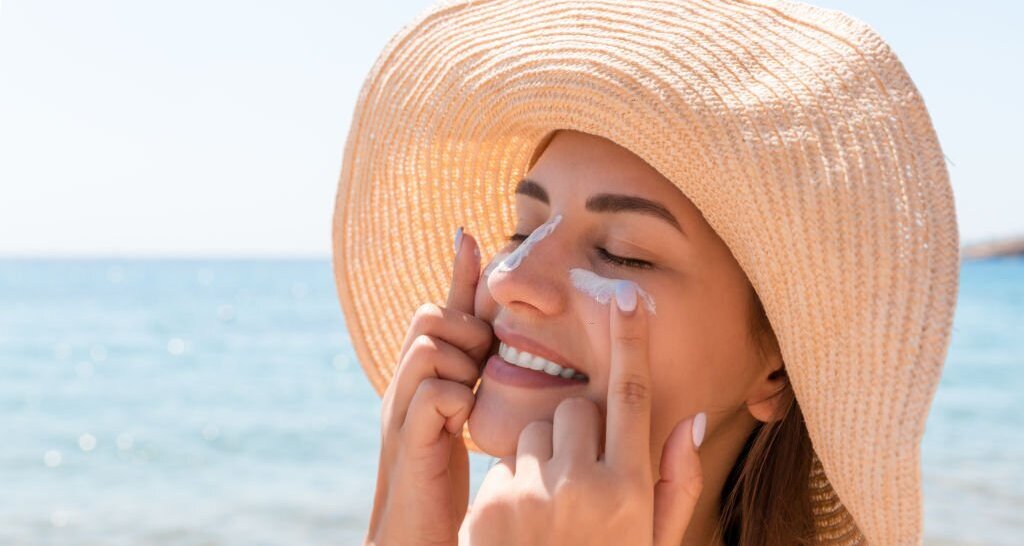The best way to protect your skin is to apply sunscreen every day, but if you're not applying it correctly, your skin won’t be fully protected from the sun. The wrong technique can cause your skin to become irritated or burnt, and it could even lead to cancer in some cases. By following these tips, you can get all the protection you need without having to worry about whether or not you've missed a spot!
How To Apply Sunscreen Correctly
Applying sunscreen correctly is vital for preventing skin cancer and ageing. Here are the tips to make sure you're doing it right.
1. Apply a small amount of sunscreen to one side of your face

You don't need to apply sunscreen all over your face, just enough so that you can see it on your skin. Then, rub in the sunscreen onto your skin with your hands or a sponge until it disappears, with no greasy residue left behind (this will take about 30 seconds).
Next, apply more sunscreen on top of this first layer. Again, make sure you rub it in well so that there are no streaks or patches left behind. Do this step on both sides of your face and then move onto other areas like underarms, or your back and neck if they will be exposed to the sun!
2. Use your fingers to gently massage the sunscreen into your skin

Before you apply sunscreen, make sure that your face is dry. Moisturizing lotions, especially those containing SPF, should be applied in the morning or evening before putting on other products. The best way to apply sunscreen is by gently massaging it into your skin using circular motions for about 30 seconds. Avoid rubbing too hard as this can cause irritation and redness on sensitive areas like around eyes or nose creases.
3. If you have dry skin, use a moisturiser prior to applying sunscreen
- If you have dry skin, use a moisturizer prior to applying sunscreen.
- Moisturizers can be applied after sunscreen.
- Many people prefer to use moisturizer as a base for their SPF products so that they don't have to layer on two different products at once (a step that can be difficult to remember). However, this is not required and if you like the way your face looks without a moisturizer underneath then by all means go ahead and skip it!
- It's also worth noting that many facial sunscreens come with built-in moisturizers so if yours doesn't have one already but has other good qualities such as being waterproof or sweatproof then there's no need to add extra hydration before application either--just make sure it goes on smoothly so there aren't any white streaks left behind when done properly!
4. Apply sunscreen liberally and evenly to all exposed areas on your body
- Apply sunscreen liberally and evenly to all exposed areas of your body.
- Apply sunscreen 15 minutes before going out in the sun, and reapply every 2 hours or more often if you are sweating or swimming.
5. Sunscreen is vital for preventing skin cancer and ageing, but it's important to apply it correctly
Applying sunscreen is one of the most important things you can do to prevent skin cancer, but it's not always easy. If you make a mistake while applying your SPF, it could lead to sunburn or cause damage from overexposure to ultraviolet rays.
Here are some tips for applying sunscreen correctly:
- Don't forget about your ears! The area around them gets just as much sun exposure as any other part of your face and neck--and yes, that includes sunglasses! It's also important to keep in mind that many people have sensitive ears (even if they don't think so), so choose a fragrance-free product if possible when buying sunscreen for this part of your body.
- Apply enough cream or lotion so that all exposed areas are covered with a thin layer at least 30 minutes before heading outside.
Why Applying Sunscreen to Your Face is Important
Did you know that the skin on your face is among the most sensitive and vulnerable to sun damage? This is because it is often exposed to UV rays more frequently than other parts of your body, making it more susceptible to sunburn, premature ageing, and skin cancer. Applying sunscreen to your face helps to protect your skin from these harmful rays.
In addition to protecting your skin from sun damage, applying sunscreen to your face can also help to prevent the development of dark spots and uneven skin tone. UV rays can cause an increase in melanin production, which can lead to hyperpigmentation and discoloration. You can also check this article to Reduce Breakout & Pigmentation Effectively. By using a daily facial sunscreen, you can help to maintain a more even and youthful complexion.
Checkout Nihon Water Gel UV Sunscreen, which will help you to protect your skin by harmful UV rays.
Conclusion
Sunscreen is a vital part of any skincare routine, but it can be tricky to apply correctly. The best way to protect your skin is by applying a generous amount of sunscreen and evenly spreading it over all exposed areas of your body. If you have dry skin or are sensitive to the sun's rays, consider using moisturizer prior to application--this will help keep your skin hydrated throughout the day while also providing protection from ultraviolet light rays that cause damage over time.
FAQ
How much sunscreen should I apply to my face?
You should apply about a nickel-sized amount of sunscreen to your face.
When should I apply sunscreen to my face?
You should apply sunscreen to your face at least 15 minutes before going outside.
How often should I reapply sunscreen to my face?
You should reapply sunscreen to your face every two hours or immediately after swimming or sweating.
Can I apply makeup over my sunscreen?
Yes, you can apply makeup over your sunscreen, but make sure to let the sunscreen dry first.
Should I use a separate sunscreen for my face and body?
It is recommended to use a separate sunscreen for your face and body, as facial sunscreens are often formulated to be less greasy and more gentle on the skin.



